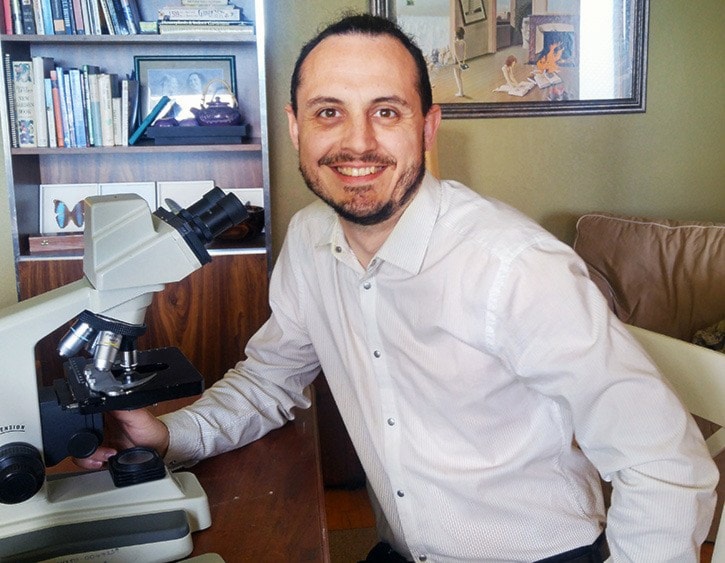When Sooke resident Meg Anderson moved to a house in Ladysmith a few years ago, she noticed she was getting a cough, her chest felt heavy and she couldn’t sleep.
A couple of trips to the doctor revealed she had asthma, and that her lungs were attacked by an allergy. Just before she decided to move out, she discovered her house’s foundation was leaking moisture into the structure, allowing mold to grow and thrive.
“I didn’t see it because it was behind the bed, dressers and places that you don’t always move around. It was in the drywall, and it was black,” she said.
She later moved to Sooke, but Anderson’s ordeal with mold is far from over.
“I love the air here [in Sooke] but my asthma has gotten worse,” she said, adding that her apartment, while better for her allergies, isn’t mold-free, either.
“It’s a real dilemma for me, because I’m on a disability pension and I can’t even afford to pay rent or get the medication I need,” Anderson said.
Turns out, mold likes the Island and Lower Mainland, thanks to the humid, temperate rainforest setting, said Ryan Ractliffe, owner of Axiom Mould Experts, a remediation company that specializes in mold.
“We have high moisture conditions, whether it be from rain or high humidity, so that, in combination with the building materials use, will often cause mold to grow,” Ractliffe said, adding high humidity, or water intrusion, notably near washing machines, dishwashers, sinks, plumbing, as well as leaky windows contribute to mold.
Ractliffe pointed out the drywall contents makes a big difference too, such as oriented strand board, which he calls one of “the worst-offended materials” as it is porous and full of organic matter.
“Mold’s role is to break down organic matter, so they can return to the soil and have other organisms use them, but they can’t tell the difference between a tree outside and our home,” he said.
Most concerning, is stachybotrys, (also known as toxic black mold) due to its highly toxigenic nature, though, despite common belief, Ractliffe said the colour of mold is not an indicator to its toxicity.
“There are some white molds that are very toxic, and there are some black molds that are quite allergenic or benign,” he said. “Understanding the difference between the two becomes quite important to how we treat these problems.”
Unlike stachybotrys, which takes a longer time to grow, penicillium aspergillus (also common in homes) grows within 24 to 48 hours of damp conditions. Common symptoms for mold exposure are usually headaches, sore throat, tightness in the chest, eye irritation, among others.
“They’re [mold] releasing these enzymes in the air as part of their digestive process, and a defense against bacteria, their natural, mortal enemy. We just get caught in the crossfire of it,” he said.
The elderly, the very young and those with existing lung diseases and compromised immune systems are most at risk to mold effects, noted Chris Carlston, a physician and associate professor at the University of British Columbia.
“Anyone who has a history of asthma, that even on itself puts them in a special category of concern,” he said, adding healthy adults with good immune systems should be OK.
“They may be irritating, they may be annoying, they may even make you feel nasty, but it’s not a disease. If you are exposed to mold every day, it’s chronic but it doesn’t actually cause a chronic medical
condition.”
A lot of it comes down to prevention, Ractliffe said, such as maintaining a dust-free environment and a dehumidifier to keep the humidity level around 50 per cent or lower.
“Keep the air as dry as possible, that way if there are any spills, or if there’s any moisture escaping, that things can dry up quickly,” he said. “Another thing is to resolve any flooding and seepage issues into the house, especially in the basement.”
